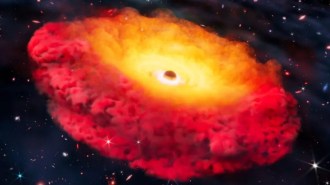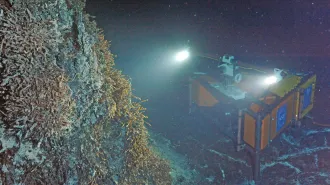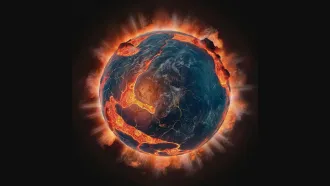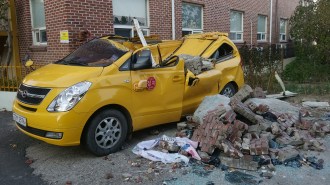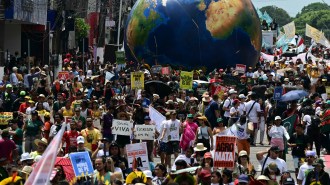Here’s a look at the world’s deadliest volcanoes — and the ways they kill
Scientists compiled a database of all recorded volcanic fatalities since 1500
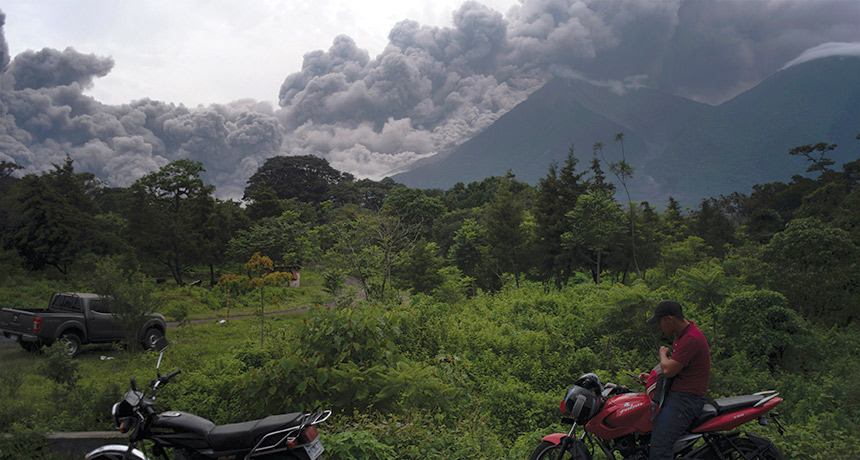
DANGER ZONE Guatemala’s Fuego volcano erupted on June 3, sending flows of superheated rock and gas down its slopes. At least 69 people have been reported dead from the eruption. An analysis of fatalities shows how volcanoes have killed people since 1500.
Santiago Billy/Associated Press
Guatemala’s Fuego volcano erupted explosively on June 3, sending hot gas and rock racing downhill in what’s known as a pyroclastic flow. At least 69 people were killed. Emergency officials are trying to reach buried villages to assess the scope of the disaster, but Fuego is already the world’s deadliest eruption of 2018.
The tragedy offers a grim reminder of the many dangers posed by volcanic eruptions. While pyroclastic flows figure prominently in an exhaustive list published last year by British scientists, there are many other potential threats including toxic gas and lava flows. The scientists analyzed how nearly 280,000 people have died in eruptions, including about 62,600 deaths from indirect causes such as famine and disease in the aftermath, since the year 1500.
Nearly half of the total number of direct deaths, or about 125,000, came from just seven eruptions. They include the 1883 eruption of Krakatau, in Indonesia, that swept away approximately 36,000 in a tsunami triggered by the eruption. The 1815 eruption of Tambora, also in Indonesia, killed an estimated 12,000 people right away. (Indonesia has more people living near active volcanoes than any other country.)
Globally, there are around 1,500 active volcanoes, with about 800 million people living within 100 kilometers of one. The new database breaks out information on how far from each eruption people have died.
Within 5 kilometers of a volcano, one danger is being hit by flying rocks, which fall into a hazard category volcanologists call “ballistics.” In 2014, 57 hikers on Japan’s Mount Ontake were killed this way. So, too, were six volcanologists and three other people at Colombia’s Galeras volcano in 1993.
At about 10 kilometers from an eruption, pyroclastic flows — the incendiary clouds of ash and rock that descend at screaming-fast speeds — are particularly deadly. On the Caribbean island of Martinique in 1902, a pyroclastic flow from Mount Pelée killed nearly all 28,000 people in a nearby town; the few survivors included a prisoner saved by his protective cell. For the recent eruption of Guatemala’s Fuego, one of the most active volcanoes in Central America, pyroclastic flows appear to account for most of the 69 fatalities reported so far. (These deaths were not included in the study or in the graphics in this article.)
At greater distances, the deadliest hazards include mudflows called lahars, caused when an eruption melts ice atop a volcano, and tsunamis set off by eruptions. In 1985, the Nevado del Ruiz volcano in Colombia erupted and sent lahars rushing down its slopes, killing some 24,000 people.
“Pinpointing these lethal ranges is quite important” to help emergency officials better prepare, says Sarah Brown, a volcanologist at the University of Bristol in England who led the analysis. Her team is now developing educational films on volcanic hazards and having them translated into languages such as Indonesian.
This spring, many of the most dramatic volcano images have come from Kilauea, on the Big Island of Hawaii, which began spurting lava into housing developments. But no one has been killed at Kilauea. Instead, the disaster in Guatemala has shown where the real danger lies.
